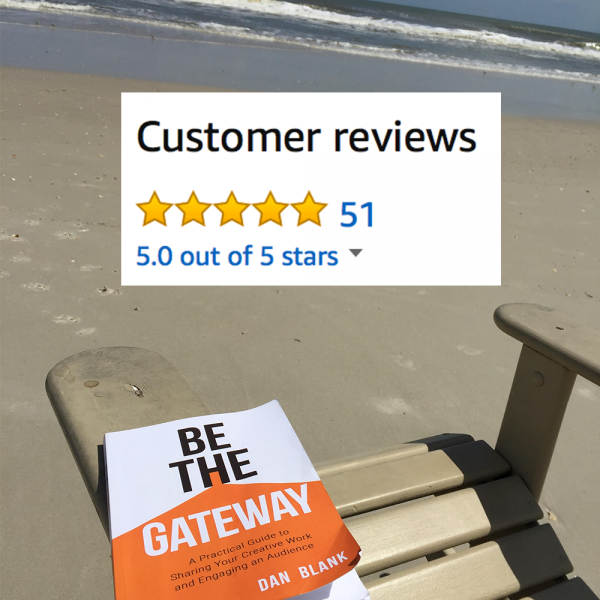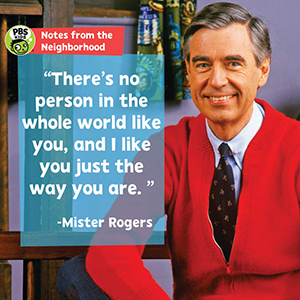Something special happened this week. My book reached the milestone of receiving 50 reviews on Amazon, with an average rating of 5 stars:

Someone asked: “How did you do this?”
It was a difficult question to consider. In many ways, the honest answer is, “I didn’t. Generous readers have supported me and my work. They did it all.” And that is indeed true. Someone bought the book. Read it. Then took it upon themselves to craft and post a review.
But I would be lying if I said I didn’t check the Amazon page for new reviews, and that when I see the number of reviews go up by one, my heart jumps a little.
Because of this, over the course of this year, I have suggested to people that they post a review the book. This is done in little ways: an email, in-person, or a social media reply. I didn’t offer them anything in return, but I wanted to make it clear to people: “It would mean a lot to me if you would post a review.” Just simple communication, not any kind of “campaign.”
Another true answer to something that led to book reviews is that I spent 10+ years developing a readership for the book via hundreds of blog posts, newsletters, and tens of thousands of social media updates. I have spoken at dozens of major conferences, and run well more than 100 webinars. I’ve taught course after course. Plus I’ve worked with hundreds of people directly in my consulting work and my mastermind groups.
All of these things have contributed in some way to getting reviews on Amazon, just as they contributed to the content of the book itself.
When I started WeGrowMedia back in 2010, I created an online course called “Build Your Author Platform.” At the time, there were very few online courses for writers and creative professionals, and only a handful of people really teaching the idea of “platform.”
Since that time, the concept of “platform” has gone from a bold new idea to a played out marketing term, and back around to a pretty consistent part of what it means to be a creative professional of any sort. Today I would like to explore: what does platform really mean today, and how can you best embrace it to support your creative work?
For starters: platform is not about getting a lot of people to follow you. It is about forging a meaningful connecting with just one person.
If you are lucky, that connection happens with more than one person. Let me explain it this way. It is not:
“I HAVE AN AUDIENCE OF 10 PEOPLE!”
It is:
“Amy F. likes my stuff.”
“Robert T. likes my stuff.”
“Craig S. likes my stuff.”
“Rebecca K. likes my stuff.”
“Jen B. likes my stuff.”
“Susan O. likes my stuff.”
“Brad W. likes my stuff.”
“Deborah K. likes my stuff.”
“Brian K. likes my stuff.”
“Sue M. likes my stuff.”
Why? Because your “audience” is never collected together. Each individual has a unique and personal connection to your creative work. It is as PERSONAL to them as anything in their life.
 I’ve become moderately obsessed with Fred Rogers recently. Like… on on the verge of commissioning a monument to him, kind of obsessed. What just keeps astounding me about his work is how personal it is. He isn’t talking to “an audience.” He is talking to you. One. person. at. a. time.
I’ve become moderately obsessed with Fred Rogers recently. Like… on on the verge of commissioning a monument to him, kind of obsessed. What just keeps astounding me about his work is how personal it is. He isn’t talking to “an audience.” He is talking to you. One. person. at. a. time.
I suppose what I’m saying is: be Fred Rogers.
Platform is about:
- Clarity in your work.
- Communicating in a way that is meaningful to people.
- Forging a trust in that process.
- Setting the stage for a relationship — because that is how we engage with art. The art brings something and we bring something. The “engagement” is the personal mixture of those two things. My connection to a song is wholly unique than your connection to that same song.
- Creating experiences and moments, not “content” or “followers.”
- Sustainability in your creative work and your career.
- Creative practices, processes and systems to ensure it reaches people.
The process of developing your platform is exactly that, a process. You cannot just copy it as a template.
What didn’t I mention here?
# of social media followers
# of newsletter subscribers
Nearly every day, I still see pitches for webinars and courses focused on providing “POWERFUL RAPID LIST-BUILDING TECHNIQUES” and “HOW TO GET 1,000 NEW FOLLOWERS EACH DAY.”
Some of these techniques may even work. The problem? The email list you build, or social media following you create rapidly is filled with the least engaged audience. Let’s say you create this wonderful free digital resource, and you take out Facebook ads to get people to sign up for your email list to get it. And a bunch of people do it.
Sounds great, right?
But then you find… very few people open your emails. That when you ask a question, no one replies. When you announce your big new book, your pre-orders are a flatline. And you wonder: “What is happening? I did all the rapid list-building stuff.”
Think of it this way: what if you set up a booth at a tradeshow or conference, and you create these AWESOME tote bags. And you give away 3,000 of them, and the tote bag has your book cover on them, and your website, and there is a card in them that offers them a free ebook.
You just created 3,000 new fans, right? Wrong. What if you instead experience what I often see at tradeshows: ZOMBIES walking around looking for “FREE” with GRABBY HANDS. This is how it works:
- Someone walks down the aisle scanning for FREE.
- They see your free tote bag, and their body moves into auto-pilot. They move towards it, arms reach out to grab it. They may even smile and say THANKS!
- But their mind has already moved on. An eighth of a second later they are scanning for the next FREE.
I have taken pictures of people at tradeshows who are on the floor in a corner, organizing their 36 collected totebags because they can barely carry them all.
The same applies to a lot of RAPID LIST BUILDING EFFORTS. You will be doing it for the right reason: “Wow, wouldn’t it be great to say I have 7,000 subscribers!?!” But the reality may be “Gosh, my open rates stink, and people keep unsubscribing, it is so disheartening. I suppose people don’t like my writing. Maybe I should give it up.”
The reality is that many who subscribe via these techniques may also be downloading hundreds of free ebooks, signing up for dozens of free webinars, grabbing limited time free guides or courses or videos.
These are not true “fans.” These people don’t convert when you try to sell a book. They are the EASIEST people to engage, and the hardest to convert. You are one of a bazillion people they follow. It’s akin to buying a billboard on a crowded highway. It feels good to know that 20,000 people will see your billboard today, but horrible when it seems no one is actually engaging with you or buying what you create.
So what does work? This…
Craft Comes First.
I say that a lot, and I always want to underscore it. The best way to build an audience for your work is to actually do work. To get better at it.
Get Clarity.
Then I would say you want to be clear about what you hope to achieve with sharing your creative work with the world. Too many people say, “I want to be a bestseller!” or “I want my paintings to be in an art gallery,” or “I want to play my music on a stage to 50,000 people” without really considering what that means. Then, they are shocked when the pursuit of these things are wildly unfulfilling. So get really clear about your intention with sharing, and how that will effect your day to day life.
Understand Your Ideal Audience.
Invest time in researching those you hope to engage. Not as vague demographics, but as individuals who are as unique as you are. I walk you through that process in my book, Be the Gateway.
Focus on Relationships, Not Numbers
Develop a small but ENGAGED audience for your work. One of the most surprising part of running a business has been how much success comes from a small audience. When they are the RIGHT audience, and engaged in a meaningful way. I know plenty of people with less than 1,000 subscriebrs who have thriving businesses built on top of that. Because they are the 1,000 right people. To understand the power of this, read Kevin Kelly’s “1,000 True Fans” essay if you haven’t before.
Embrace Collaborators.
You will not succeed alone. Embrace collaborators in your process. If you don’t have colleagues, you are radically increasing your chances for failure. Some of these collaborators will have a specific role: such as an editor. But others will make up the fabric of your processional support system.
What is common to all of these things? Communication and trust. Isn’t that nicer than spamming people with a “rapid list-building technique”?
Thanks.
-Dan
